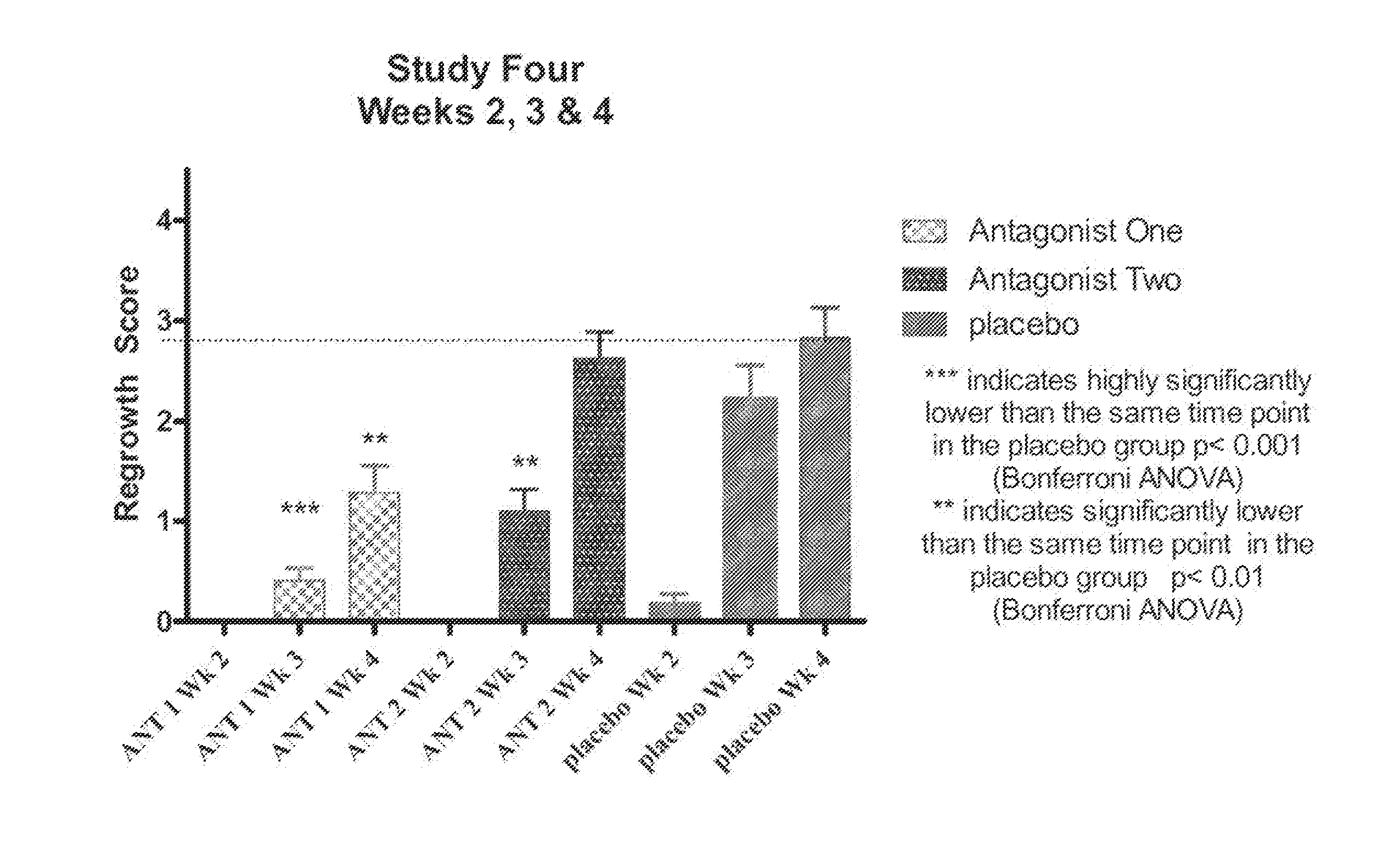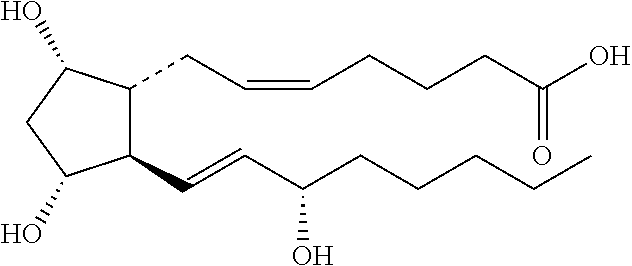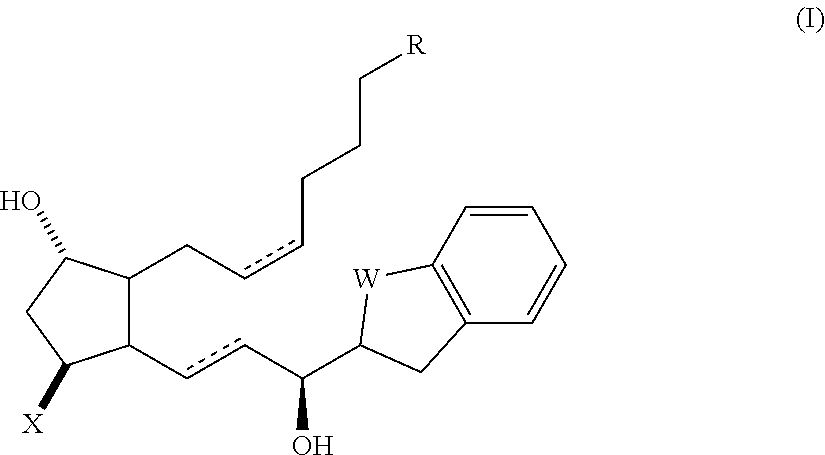Compositions and methods for inhibiting hair growth
a technology of pigmentation inhibition and composition, applied in the field of compositions and methods for inhibiting hair growth and pigmentation in mammals, can solve the problems of repeated treatments, unsatisfactory hair growth, and undesirable hair growth, and achieve the effect of slowing hair growth and stopping hair growth
- Summary
- Abstract
- Description
- Claims
- Application Information
AI Technical Summary
Benefits of technology
Problems solved by technology
Method used
Image
Examples
reference example 1
Analytical Methods
[0126]FP receptor antagonists are tested for their potential to grow hair using the Telogen Conversion Assay. The Telogen Conversion Assay measures the potential of a FP receptor antagonist to inhibit the conversion of mice in the resting stage of the hair growth cycle (“telogen”), to the growth stage of the hair growth cycle (“anagen”), and to assess the rate of anagen growth.
[0127]Without intending to be limited by theory, there are three principal phases of the hair growth cycle; anagen, catagen, and telogen. It is believed that there is a longer telogen period in C3H mice (Harlan Sprague Dawley. Inc., Indianapolis, Ind.) from approximately 40 days of age until about 75 days of age, when hair growth is synchronized. It is believed that after 75 days of age, hair growth is no longer synchronized. Wherein about 40 day-old mice with dark fur (brown or black) are used in hair growth experiments, melanogenesis occurs along with hair (fur) growth wherein the topical a...
example 1
[0131]An FP receptor antagonist having the structure:
was tested according to the method of Reference Example 1. The average grade was calculated by averaging the grades of 7 mice after 23 days, 25 days, and 26 days. The results are in Table 3.
example 2
[0132]An FP receptor antagonist having the structure:
was tested according to the method of Reference Example 1. The average grade was calculated by averaging the grades of 7 mice after 23 days. The results are in Table 3.
TABLE 3Average GradesExample23 Days25 Days26 Days10.40.10.720.1not measurednot measured
PUM
| Property | Measurement | Unit |
|---|---|---|
| diameter | aaaaa | aaaaa |
| hydrophobic | aaaaa | aaaaa |
| density | aaaaa | aaaaa |
Abstract
Description
Claims
Application Information
 Login to View More
Login to View More - R&D
- Intellectual Property
- Life Sciences
- Materials
- Tech Scout
- Unparalleled Data Quality
- Higher Quality Content
- 60% Fewer Hallucinations
Browse by: Latest US Patents, China's latest patents, Technical Efficacy Thesaurus, Application Domain, Technology Topic, Popular Technical Reports.
© 2025 PatSnap. All rights reserved.Legal|Privacy policy|Modern Slavery Act Transparency Statement|Sitemap|About US| Contact US: help@patsnap.com



